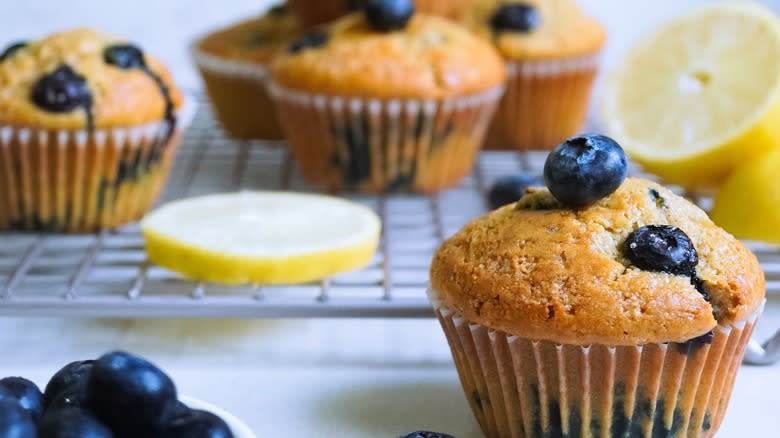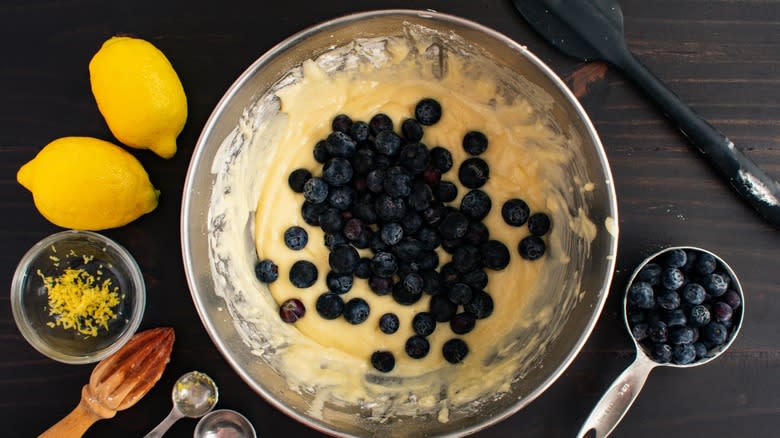Why Leaving Lemon Juice Out Of Your Blueberry Bakes Is A Major Mistake

Ever split open a hot blueberry muffin to find that each fruit is surrounded by a weird little halo of greyish green? While it's highly unlikely that your fresh berries have suddenly gone off in the oven, you may be making the mistake of leaving lemon juice out of your blueberry bakes. Adding a dash of the zingy citrus juice to blueberries before incorporating them into your batter brightens their natural bluish tone and prevents them from developing that greenish tinge. But why does this happen?
Blueberries contain a water soluble pigment called anthocyanin, which changes color when it's introduced to an acidic or alkaline ingredient. Mix a handful of the fruits into a batter that contains an abundance of alkaline ingredients, like baking soda, and this pigment will turn green. However, coat them in a slick of an acid, like lemon or lime juice, and the blue tones in their flesh will be brought to the fore, resulting in a bake that features fruit with a deep purplish-blue hue.
While omitting the baking soda in your recipe to help retain the color of your berries is an option, this move will hamper the rising capabilities of your cake. Combining it with the citric acid found in lemon juice, however, will raise its pH and neutralize it's color-changing affects without it negatively affecting the leavening process. The result? Bakes that look uber-inviting when broken apart because the vibrancy of the blueberries pops against the neutral color of the surrounding crumb.
Read more: 30 Types Of Cake, Explained
A Little Lemon Juice Can Also Help Baked Goods Rise

When acidic ingredients, like lemon juice, yogurt or buttermilk, react with baking soda they produce bubbles of carbon dioxide that expand in the heat of the oven. These bubbles trigger leavening, causing cakes and cookies to rise better as they bake, which is a great byproduct that comes with adding lemon to fresh blueberries. Better yet, the juice doesn't affect the overall flavor of your baked goods or make them taste sour. This is because only a small amount of lemon juice (just enough to lightly coat the berries so you don't create an imbalance of liquid in your recipe) is sufficient for it to work its magic. The juice doesn't have to be freshly squeezed either; bottled lemon juice with a long shelf life is equally effective.
Another great tip for baking with blueberries is to coat them with cornstarch or flour before adding them to a wet batter. This move prevents the fruit from sinking to the bottom of the pan, guaranteeing that they're evenly distributed throughout your bake. The space around each blueberry also gives the berries ample space to burst open and create delicious little pockets of sticky juice. So, whatever choice of delectable blueberry bakes you decide to make, remember these lemon and cornstarch tips for better results every time.
Read the original article on Tasting Table.


